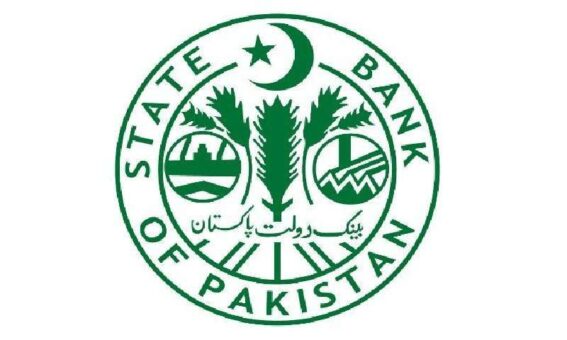During its meeting on Tuesday, the Monetary Policy Committee (MPC) announced to raise the benchmark policy rate by 100 basis points to 21 percent.
The State Bank of Pakistan (SBP) in a statement said that the MPC acknowledged that inflation had risen to 35.4 percent in March 2023, and that it was expected to remain high in the short term, although there were signs that inflation expectations were stabilizing at a high level.
READ MORE: Pakistan exports plummet by 10% during July – March 2022-2023
The MPC believes that this decision is an important step towards anchoring inflation expectations around the medium-term target, which is critical for achieving price stability. The MPC also noted that Pakistan’s financial sector remains generally resilient, while economic activity continues to slow down.
The Committee identified three key developments since its last meeting that have implications for the macroeconomic outlook. First, the current account deficit has narrowed considerably, more than previously anticipated, mainly due to significant import containment. Nonetheless, the overall balance of payments position remains under stress, with foreign exchange reserves remaining low.
READ MORE: Khunjerab Pass reopens for Pakistan, China trade
Second, significant progress has been made towards completing the 9th review under the IMF’s EFF program. Third, recent strains in the global banking system have led to further tightening of global liquidity and financial conditions, making it difficult for emerging market economies like Pakistan to access international capital markets.
Given these circumstances, the MPC believes that the current monetary policy stance is appropriate, and that today’s decision, along with previous accumulated monetary tightening, will help achieve the medium-term inflation target over the next eight quarters. However, the Committee noted that the uncertainties surrounding global financial conditions and the domestic political situation pose risks to this assessment.
READ MORE: Pakistan rejects reports of trade relations with Israel
The MPC noted that economic activity continues to reflect a broad-based slowdown, with significant declines in sales volumes of automobiles and POL in recent months, as well as an acceleration in the contraction of large-scale manufacturing (LSM) to 7.9 percent year-on-year in January. LSM output has decreased by 4.4 percent during Jul-Jan FY23 compared to the corresponding period of the previous year.
Electricity generation also declined for the ninth consecutive month in February. In agriculture, cotton arrivals remain as expected, but the wheat production target is likely to be missed. These developments, combined with the lagged impact of recent monetary tightening and new fiscal consolidation measures implemented since the beginning of March, suggest that growth in FY23 will be significantly lower than the post-floods assessment of November 2022.
READ MORE: Pakistan’s headline inflation hit record high at 35.4% in March 2023
In February 2023, the current account deficit was only $74 million, and the cumulative deficit now stands at $3.9 billion in Jul-Feb FY23, about 68 percent lower than in the same period last year. This is mainly due to the contraction in imports, which continues to outweigh the combined decline in remittances and exports.
However, higher loan repayments relative to disbursements are keeping foreign exchange reserves under pressure, despite the lower current account deficit. Therefore, the Committee emphasized that the early conclusion of the 9th review under the IMF program is critical to rebuild FX reserve buffers.
The MPC believes that the fiscal outcomes during Jul-Jan FY23 have been encouraging in the context of achieving macroeconomic stability. The fiscal deficit was contained at 2.3 percent of GDP during Jul-Jan FY23, compared to 2.8 percent in the same period last year, while the primary balance posted a surplus of 1.1 percent of GDP against a deficit of 0.3 percent last year.
This improvement in the primary balance was achieved on the back of lower subsidies, grants, and development spending. However, growth in tax revenues has remained below target due to a slowdown in economic activity, reduction in imports, and inadequate policy focus on expanding the tax net, while debt servicing has increased. In this context, the Committee noted that delivering the envisaged fiscal consolidation is important to complement the ongoing monetary tightening to achieve price stability.
